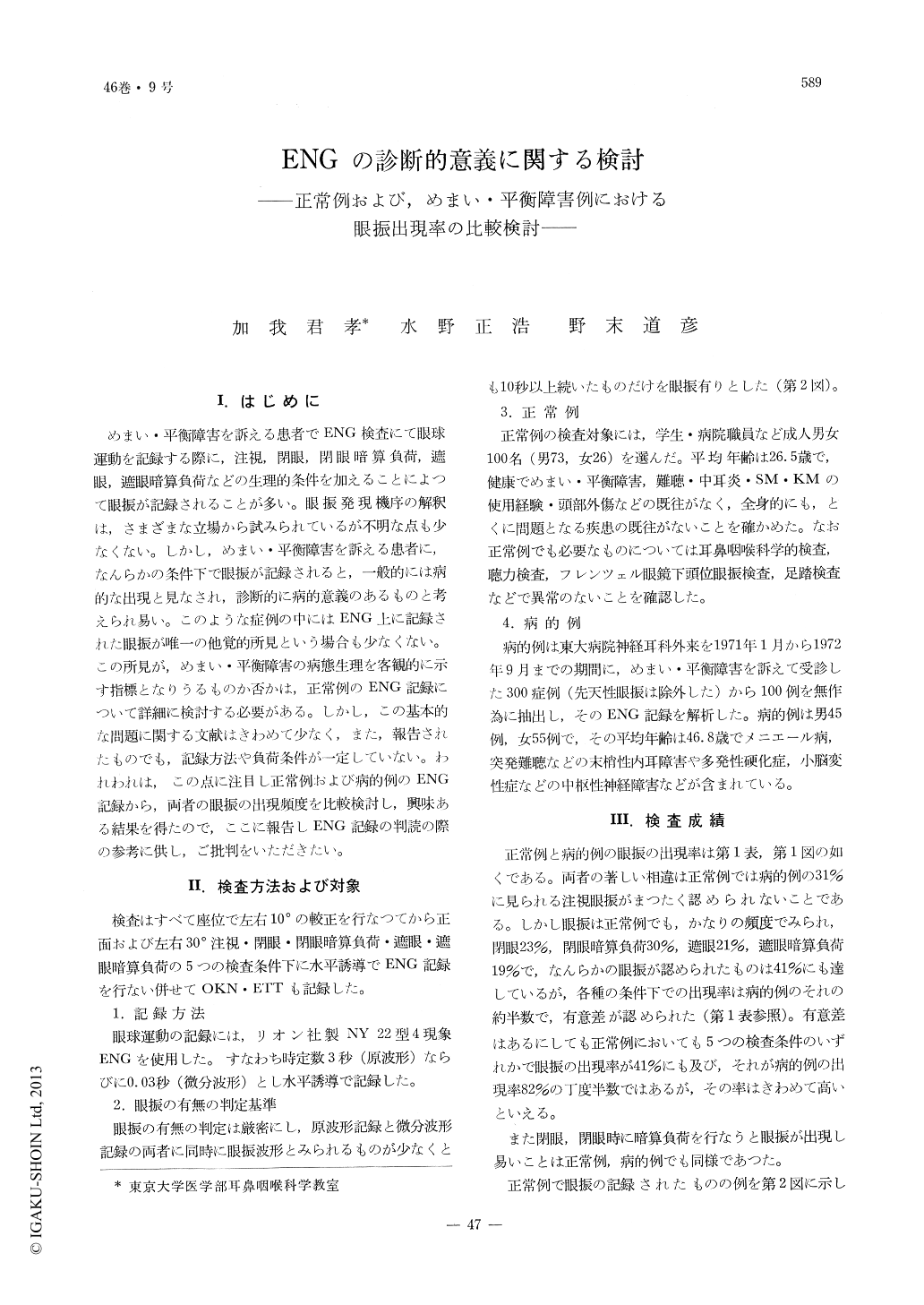Japanese
English
- 有料閲覧
- Abstract 文献概要
- 1ページ目 Look Inside
I.はじめに
めまい・平衡障害を訴える患者でENG検査にて眼球運動を記録する際に,注視,閉眼,閉眼暗算負荷,遮眼,遮眼暗算負荷などの生理的条件を加えることによつて眼振が記録されることが多い。眼振発現機序の解釈は,さまざまな立場から試みられているが不明な点も少なくない。しかし,めまい・平衡障害を訴える患者に,なんらかの条件下で眼振が記録されると,一般的には病的な出現と見なされ,診断的に病的意義のあるものと考えられ易い。このような症例の中にはENG上に記録された眼振が唯一の他覚的所見という場合も少なくない。この所見が,めまい・平衡障害の病態生理を客観的に示す指標となりうるものか否かは,正常例のENG記録について詳細に検討する必要がある。しかし,この基本的な問題に関する文献はきわめて少なく,また,報告されたものでも,記録方法や負荷条件が一定していない。われわれは,この点に注目し正常例および病的例のENG記録から,両者の眼振の出現頻度を比較検討し,興味ある結果を得たので,ここに報告しENG記録の判読の際の参考に供し,ご批判をいただきたい。
A study of spontaneous nystagmus is made on 100 normal individuals as well as upon 100 patients. Idiopathic nystagmus is found in 41% of normal individuals when placed at a constant gaze at an object, eyes closed, performance of mental arithmatic with the eyes closed or eyes covered. These cases consist of almost one half of the recorded nystagmus among patients. In the diagnosis of vertigo producing disorders these nystagmuses are probably of no significance which are of low intensity usually below 6 degrees/sec, occasionally reaching 6-10 degrees/sec. In most cases the direction to left is similar to that of the right.
The cause of the idiopathic nystagmus is unknown, but care should be taken to note that all recorded nystagmus in ENG is not always significant in reaching a diagnosis in neurotology.

Copyright © 1974, Igaku-Shoin Ltd. All rights reserved.


